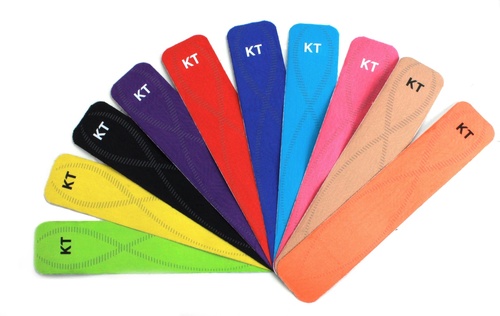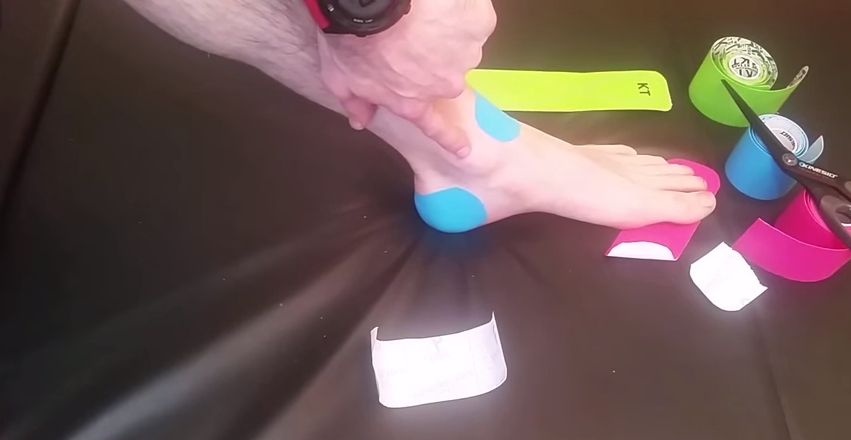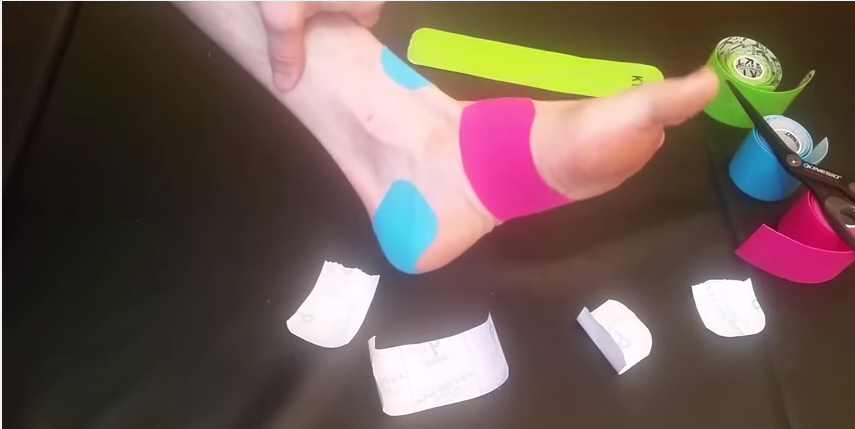What is a KT Tape?
KT Tape stands for Kinesiology Therapeutic Tape. It’s an elastic tape meant to reduce muscle pain, enhance athletic performance, and increase overall mobility. The product is often sold pre-cut which makes it easy to use. The KT Tape can also provide relief and support for joints as well as muscles and can be used to prevent or even treat many sports-related injuries.

Importance of KT Tape
The importance of KT Tape is to prevent and treat common sports injuries such as:
- Iliotibial Band Syndrome (ITBS)
- Shin Splints
- Knee Pain
- Plantar Fasciitis
One other advantage of KT Tape application is how it can speed up recovery of injured or sore muscles and joints without letting go of comfort or freedom of movement.
It’s also a big plus on how simple and easy it is to use with most common injuries requiring only up to two strips of tape. It also helps that most purchases come with injury-specific instruction manuals and videos which can help beginners get a good grasp at using KT Tape.
How does it work?
Although KT Tape can be applied in a multitude of patterns, the tape predominantly works in a few primary ways. The tape itself offers structural or muscle support; can correct postural problems and improve blood flow as well as lymphatic drainage.
When the KT Tape is applied properly, it achieves the last of these effects by lifting the skin to provide a small gap between the muscle and dermis layers. That gap removes the pressure off swelling or injured muscles, allows smooth muscle movement and provides space for drainage and blood flow.

4 Reasons to Apply KT Tape
1. Rehab
Perhaps the primary reason why KT Tapes even exist is to enable faster recovery from sports injuries or from fatigue from participating in a competition or from overtraining.
The tape can help manual manipulation easier by opening the fascial tissue and provides stabilization to the affected area. It also takes the pressure off the affected joints and muscles which allows them to focus on recovery.
2. Alignment
Posture is important in sport and in daily life. KT Tape can provide alignment support for people who slouch too much or have an alignment issue with their back, arms, shoulders, and legs.
3. Pain relief
Muscle pain is a common symptom of fatigue, over training, and injury. While massaging the affected area helps the pain associated with moving or flexing injured muscles. There is even a taping method that helps drain fluids into the lympathic ducts to decrease swelling and help treat bruising.
4. Competition
Basketball players, tennis players, football players, and other athletes can now be found often sporting KT Tapes in their arms, shoulders, and even legs or feet. Applying KT Tape improves their physical performance without getting hindered by certain conditions such as rolling ankles or patellar tracking issues.
Needless to say, wearing KT Tape before the event can save an athlete from future surgical operations or ailments after the event.
Using KT Tape for Heel Pain and Plantar Fasciitis

Applying KT Tape on the Calcaneus
The calcaneus is also known as the heel bone. It’s a large bone that lays the foundation of the rear part of the foot. Some people have calcaneal eversion or when the calcaneus is rotated outwards.
- You can perform mechanical correction via KT Tape. For this portion use one square length as anchor point.
- This tape is heat activated which means the longer you wear it the more it sticks.
- Do not apply tension on the anchor point.
- Use about as much as you need to pull the calcaneus back right underneath the ankle. This can range from 75-100% stretch.
- Wrap the tape from the anchor point, stretching it right over the top of the foot. Again don’t apply tension on the ends of the tape but apply on middle portion of taping. Don’t tape over the ankle to allow freedom of movement.
- Folds are okay, but try not to get them as much as possible. Remember all the stretching happens in the middle and not the ends.
- KT Tape allows the ankle to move freely while getting the proper correction. Just remember to take the tape off when it gets wet and remove it after 3 days to allow your foot to air out.

Supporting and Unloading the Plantar Fasciia
Plantar fasciitis is the thickening of the plantar fascia and the movements associated with stretching or contracting this tissue causes moderate to intense pain. We can use KT Tape to provide support to the fasciia. For this exercise we’ll make use of the 3-square cut.
- Apply 75-100% stretch and make sure the ankle is dorsiflexed and the tape is in the middle.
- Make sure you apply tension in the middle of the tape as it’s the part that goes right over the plantar fasciia.
- Lay it down with paper-off tension/no tension at all on the ends.
- Make sure to avoid creases or folds as much as you can. Practice definitely helps.
- Applying KT Tape helped by creating a new insertion point of the plantar fasciia towards the calcaneus bone.
- Applying mechanical correction relieves the tension near the heel and focuses the tension in the middle.
- As mentioned earlier the tapes can be worn for 3-5 days. You can choose to put your socks on or go barefoot.
A few reminders
- Remember the KISS principle: Keep It Simple Stupid. The best kind of taping is the simplest. Do not go overboard or apply one layer too many. KT Tapes are effective if you directly apply it on the affected area.
- Don’t go overboard with the taping as it can limit movement and provide discomfort.
- If pain or discomfort persists even after taping, you may try other taping procedures or consult with professional taping practitioners or taping physiotherapists.



